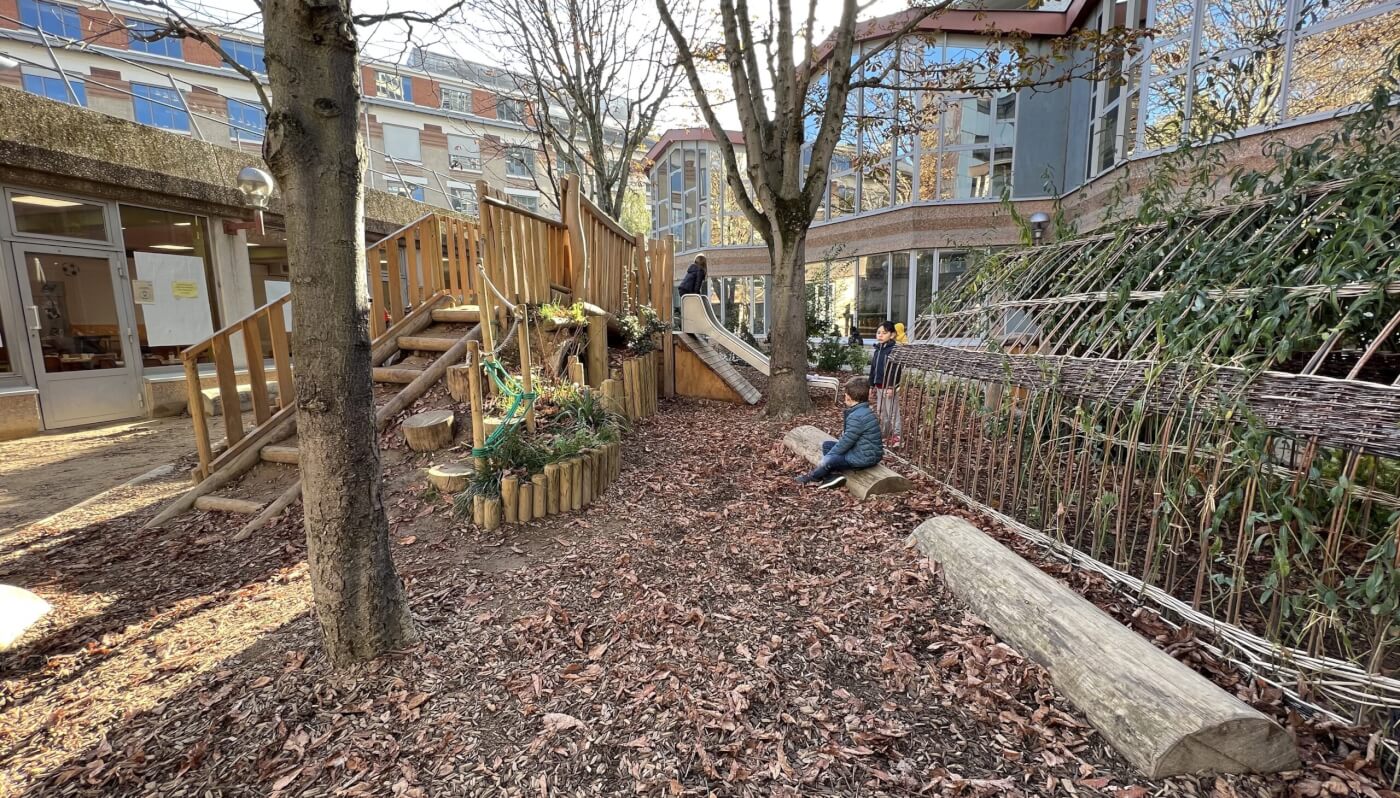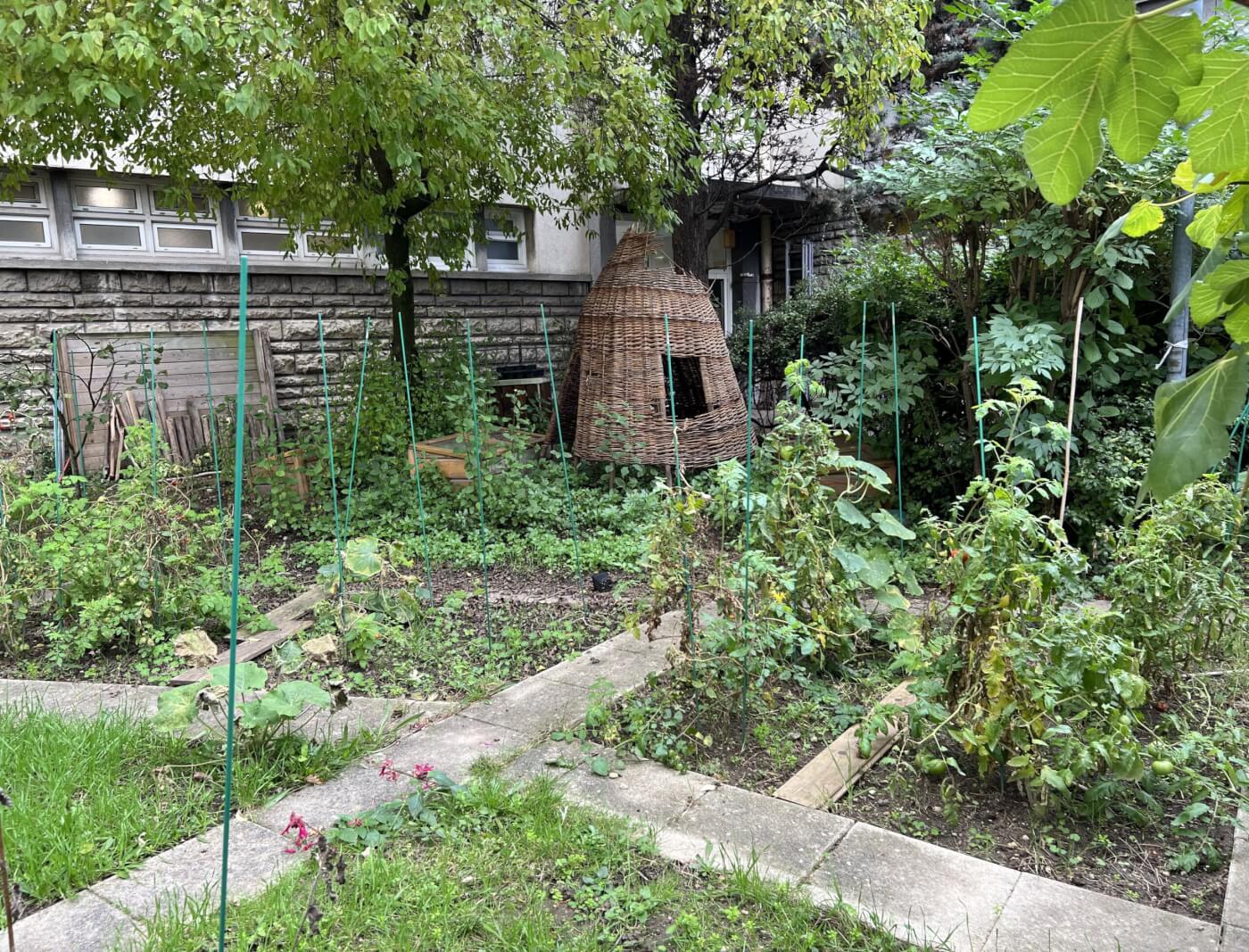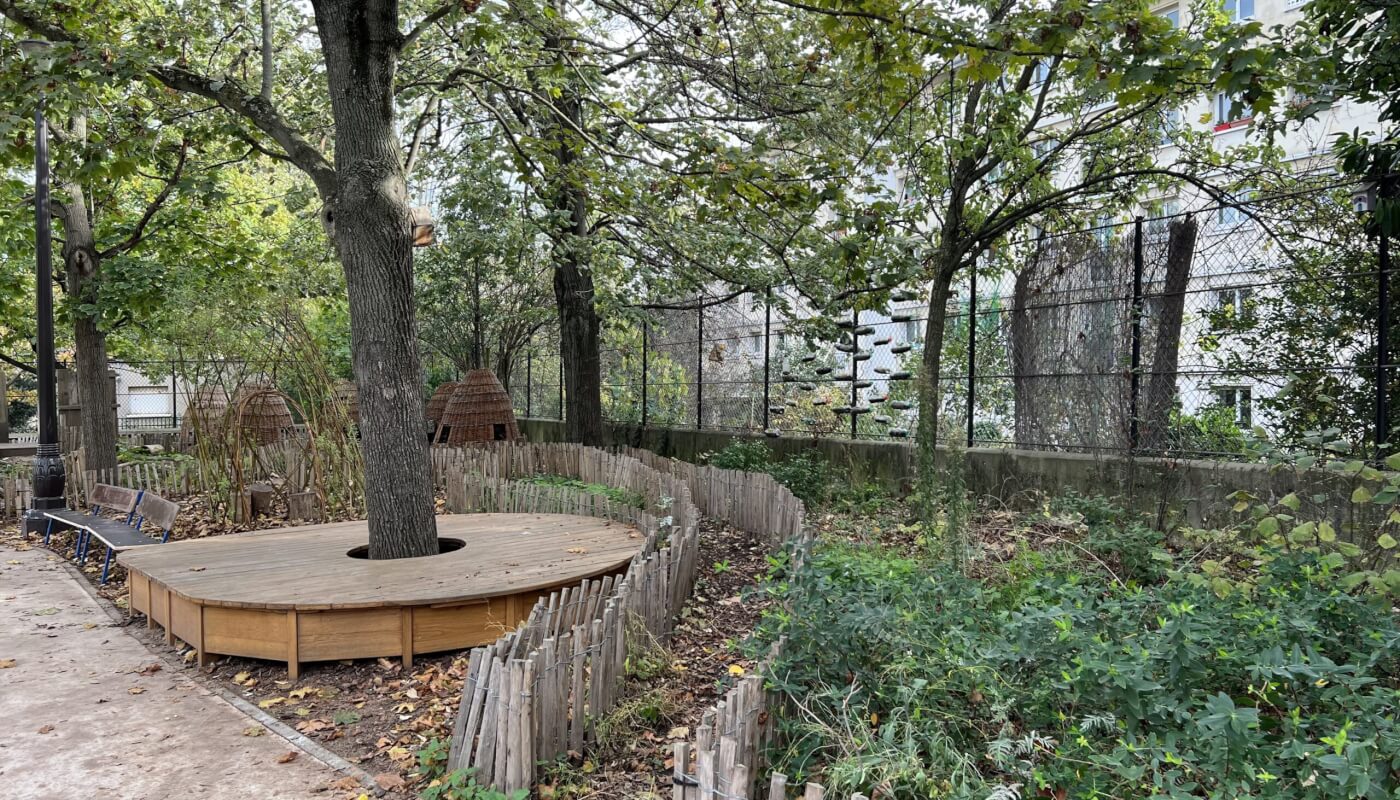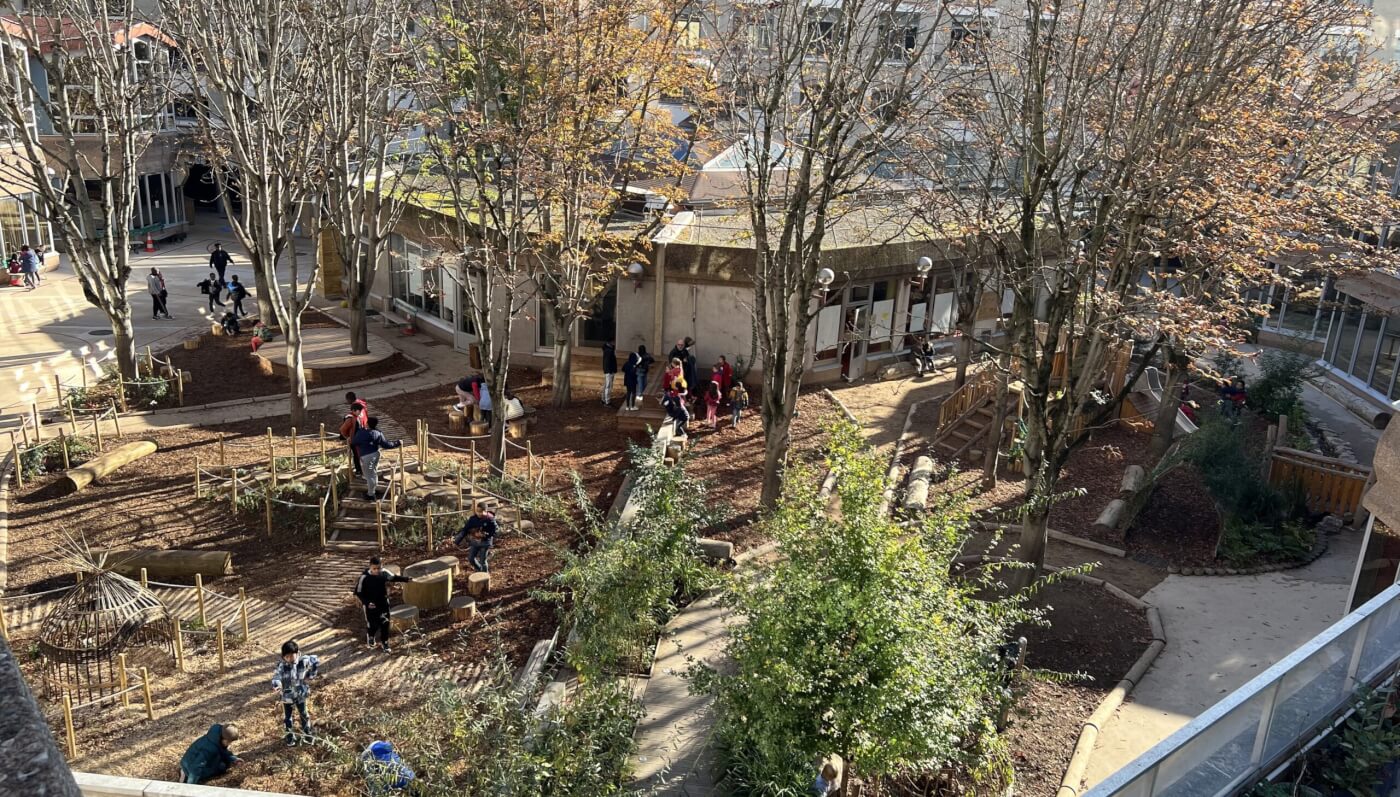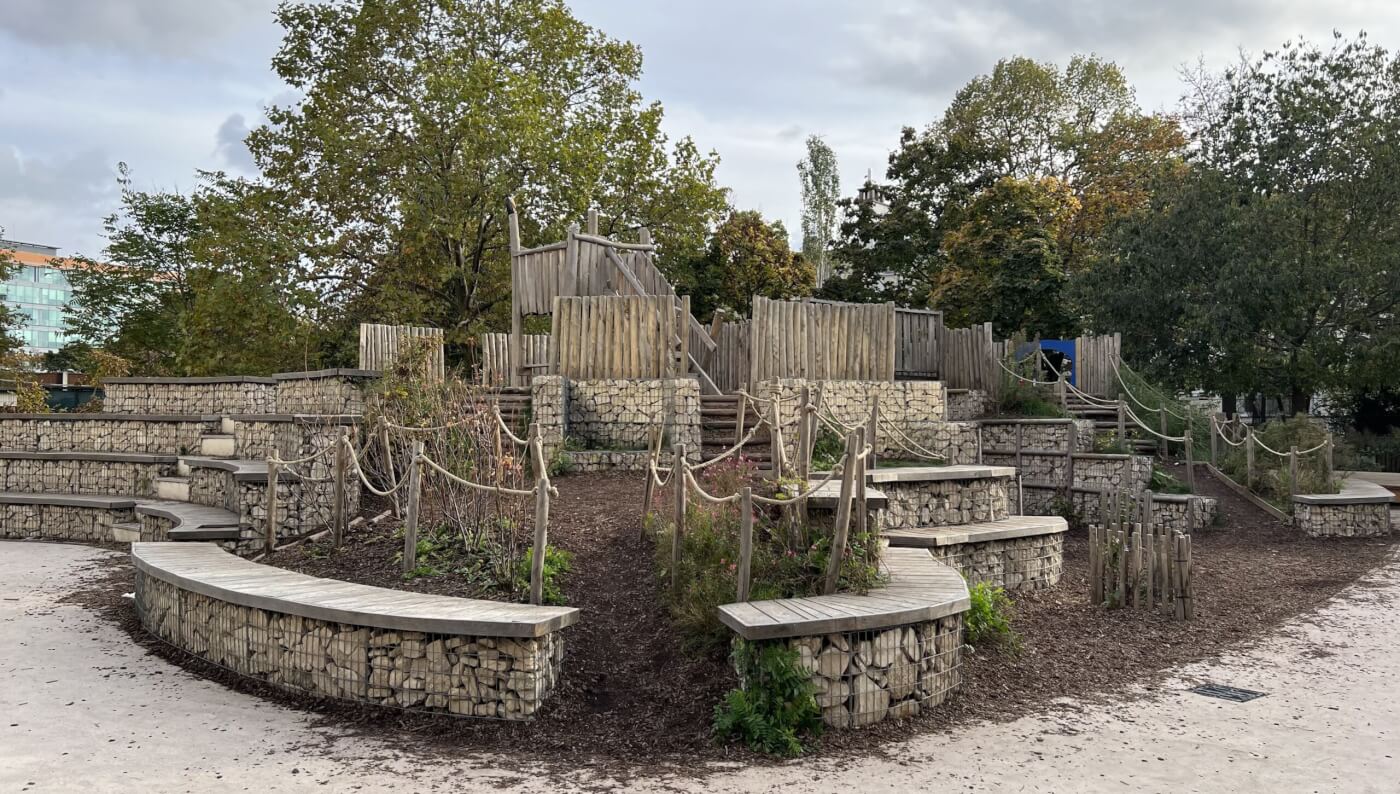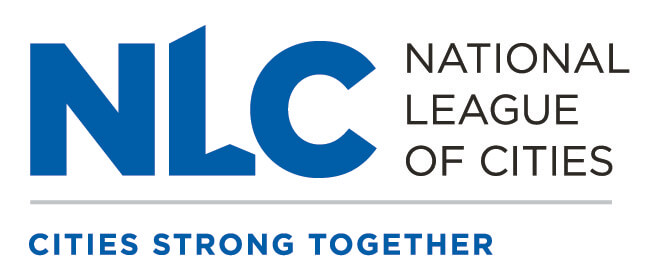Global Lessons on Greening School Grounds and Outdoor Learning
France | Les Cours OASIS, Ville de Paris
Les Cours OASIS, or the OASIS schoolyard project, started in 2018 as a component of the City of Paris’ Climate Adaptation Plan and resilience strategy. The program aims to transform urban schoolyards into nature oases for the benefit of children, teachers and residents nearby. In 2019, the project received the financial support of the Urban Innovative Actions (UIA) program of the European Union, which helped implement a renewed way of designing the schoolyards, featuring more natural materials and play amenities. Two main pillars of the OASIS schoolyards are 1) the creation of “cool urban islands” to help reduce the heat trapped by the built environment, and 2) the innovation of pedagogical approaches supported by natural elements and features, such as rainwater collectors that feed learning rivers, wooden playing structures, willow tree huts, tunnels and many more. Read more about the features in the OASIS Schoolyards Recommendations Booklet.
Find more global case studies.
“Transforming schoolyards is not only about tackling climate issues, it is about something much bigger. It’s about providing spaces for a future generation to grow up in a better world,” Raphaelle Thiollier, City of Paris
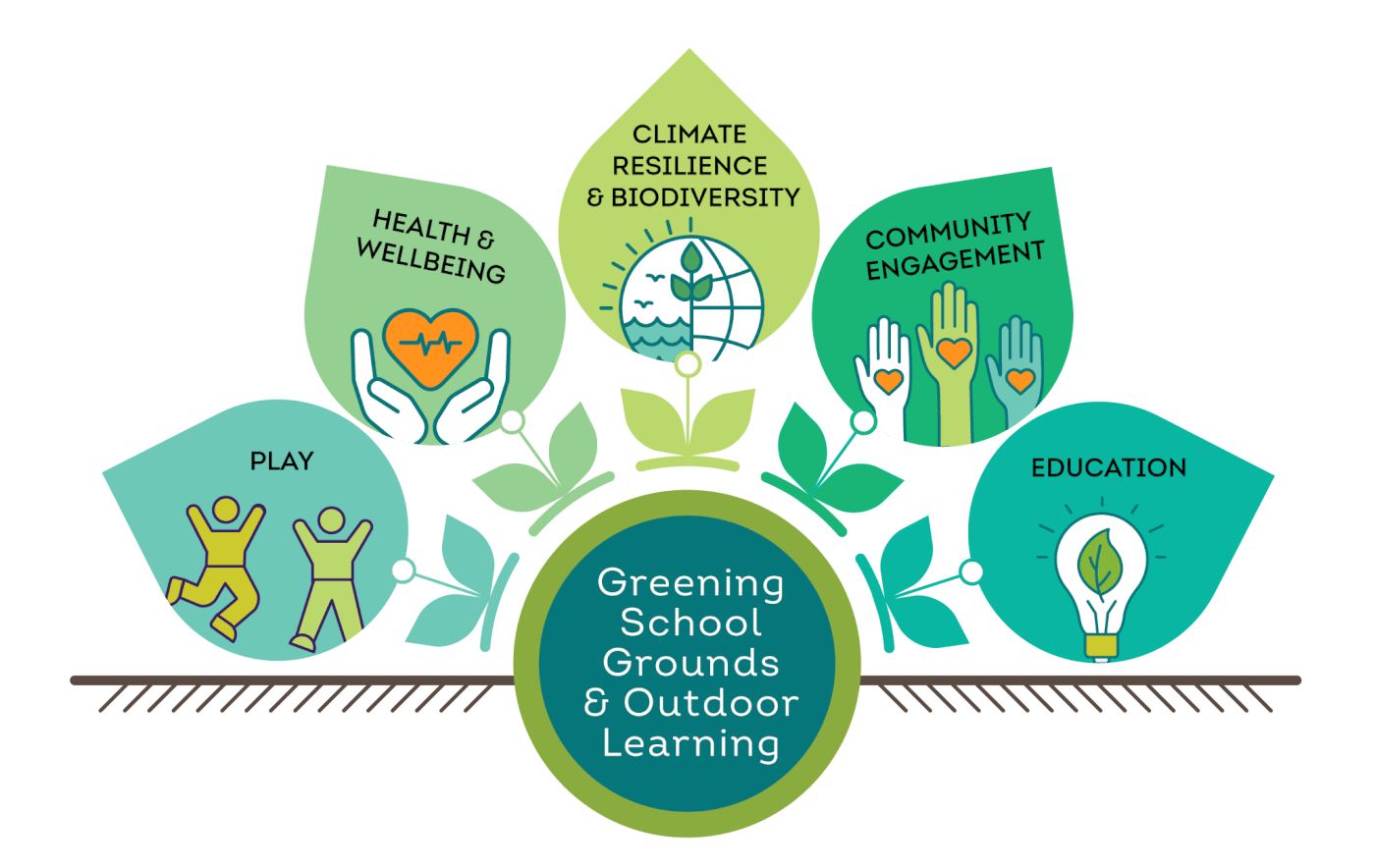
Key Aspects of the Case Study
- Climate resilience. The strategy is focused on turning Parisian preschools, elementary and middle schools into “cool islands” by integrating nature-based solutions
for shading and stormwater management. - Policy. The OASIS project aligns with other Parisian long-term initiatives such as the Paris Climate Adaptation Plan, the Biodiversity Plan, the Paris Rain Plan and the Circular Economy Action Plan.
- Community. The City of Paris sought out a strategy that would improve the citizens’ quality of life at the neighborhood scale and help build social cohesion, considering that every Parisian resides within a radius of 250 meters (820 feet) from a public school.
“Everyone participates [in the schoolyard]. The whole community. On Saturday mornings, we have a public access gate through the street. As a result, people from the neighborhood can come to the courtyard just to read, to relax, to see the new plantations. So there are also people from the neighborhood who are invested in this schoolyard,” says Béatrice Madignier, a pre-elementary school teacher at Emeriau school in Paris.
“We came to the playground with children and talked about what it is, what it looks like now and what they want to see,” says Marc Pacôme, extracurricular activities teacher at primary school La Providence, describing the co-design process. “Then we work with families and an architect to make a model based on their choices. It is a collaborative effort.”


